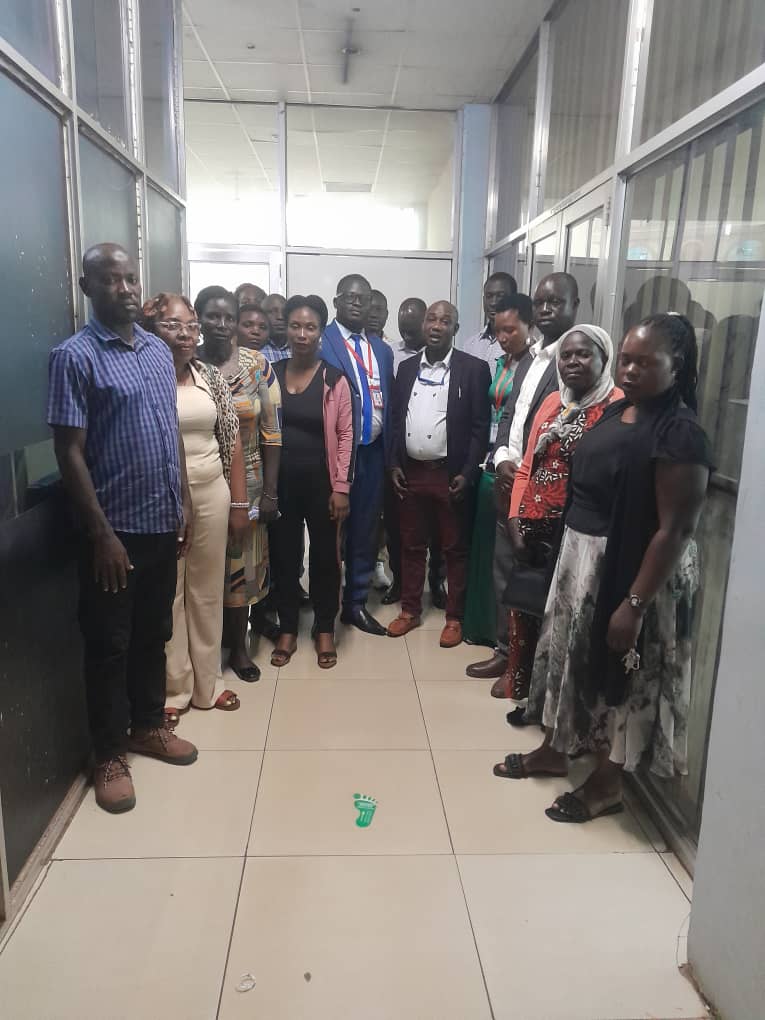MEMBERSHIP
Individual and group membership is open, however one can become a member after paying the required membership fee which is determined by the general assembly.
The organisation is governed by a board comprising 12 members. The Executive Director is appointed to the board as a secretary to the board and being responsible for the secretariat and day-to-day management of the affairs of the organization.
LYDO operates in different districts in Uganda which include;
- NAMUTUMBA
- BUYENDE
- AMOLATOR
- LIRA
- KITGUM
- GULU
- PALLISA
- BUSIA
- KATAKWI
- SERERE
- BUSHENYI
- ISINGIRO
- ARUA
- YUMBE
- KAMPALA
- GOMBA
- KOTIDO
- AMUDAT ,etc
Download our Geographical Scope for more details.
Download Our Geographical Scope (PDF)
SOURCE OF FUNDING
- Membership fees
- Medical Centre user charges and students contribution
- Grants
- Donations and partnerships
VOCATIONAL TECHNICAL SKILLS TRAINING
The organization runs a polytechnic school and aiming at operating multiple polytechnic
Schools within different districts in Uganda which;
OBJECTIVES
- Provide alternative education and skills training for school dropouts.
- Empower young women and vulnerable groups with employable skills
- Enhance economic opportunities and self-reliance.
TARGET GROUPS
- School dropouts(ages 10-25)
- Young Women (ages 15-30)
- Vulnerable groups(e.g. , orphans, persons with disabilities)
LYDO Polytechnic school offers the following programs;
- Tailoring, Bakery, Building and construction,
- Driving and mechanics, Welding and metal fabrication
- Carpentry and joinery, Soap making, Hotel
Management, Arts and craft etc.
HEALTH EDUCATION AND PROMOTION
The organization already runs 2 medical centers but aiming at operating Multiple
Medical centers within different districts in Uganda which;
OBJECTIVES
- Improves access to quality health care services.
- Reduce mobility and mortality rates.
- Promote healthy behaviors and lifestyle.
TARGET GROUPS
- Vulnerable populations(e.g. .,children, women, elderly)
- Rural and hard-to-reach communities.
- Low income households.
STRATEGIES
- Health Education: Provide training and awareness on disease prevention, healthy
Lifestyles and nutrition.
- Community Outreach: Establish community health worker programs to reach remote areas.
- Health Facility Support: Strengthen health facilities through infrastructure improvements,
Equipment provision and staff training.
- Disease Prevention and Control: Implement programs for disease prevention, detection,
And treatment (e.g., malaria, HIV/AIDS, TB)
- Maternal and Child Care: Provide prenatal care, childbith services and postnatal care to
Reduce maternal and child mortality.
AGRICULTURAL EDUCATION AND PROMOTION
The organization educates and promotes agriculture in different districts aiming at;
OBJECTIVES
- Improving agricultural productivity and income for rural communities
- Enhancing food security and nutrition
- Promoting sustainable agricultural practices.
TARGET GROUPS
- Smallholder farmers
- Rural youth
- Women farmers
- Local communities
STRATEGIES
- Training and capacity building Provide workshops, demonstrations and hands-on training on modern agricultural practices, soil conservation and irrigation managemnet.
- Demonstartion farms Establish model farms to showcase best practices and new technologies.
- Farmer field schools Organise schools where farmers can learn from each other and from experts.
- Extension services : Provide regular visits, advice and support to farmers
- Input support Provide access to quality seeds,fertilizers, and equipment
- Market linkages Connect farmers to markets traders and processors.
- Climate-smart agriculture : Promote practices that enhance resilience to climate change.
ORPHANAGE
LYDO provides targeted support to orphans and other vulnerable children, including educational sponsorships, Healthcare assistance, dressing, feeding, safe and nurturing environmment and empowering them with life skills and Values for independent living. And these orphans are identified through Conducting house-to-house surveys, engaging with the community by Building the relationships with local leaders, churches and mosques etc.
TARGET GROUPS
- Orphaned children (ages 2-18)
- Vulnerable children (e.g., abandoned, neglected, abused).
GENDER EQUALITY AND SOCIAL INCLUSION
- Promote gender equality and women's empowerment
- Address social exclusion and discrimination
- Foster inclusive communities and institutions
TARGET GROUPS
- Women and girls
- Marginalised communities (e.g. ethnic minorities and persons with disabilities.)
STRATEGIES
- Gender sensitization: Conduct training and workshops to raise awareness on gender equality.
- Women's Economic Empowerment: Provide access to education, skills training and economic opportunities.
- Social Inclusion: Promote inclusive practices and policies in institutions and communities.
- Advocacy: Advocate for policy changes and laws that promote Gender equality and social inclusion.
- Equity: Ensuring fair access to resources, opportunities and Services for all individuals regardless of sex, age and physical Abilities
- Accessibility: Ensuring that resources are readily accessible and usable for all regardless of age, sex and abilities. These include
Social, economic, political as well as environmental
Opportunities.
ENVIRONMENTAL CONSERVATION
- Promote and preserve natural resources (water, land, forests, wildlife).
- Promote sustainable livelihoods and climate resilience.
- Raise awareness and educate communities on environmetal conservation.
TARGET AREAS
- Forests: reforestation, afforestation and sustainable forest managemnet.
- Water : Watershed conservation, water harvesting and effiecient use.
- Wildlife: Conservation of endangered species and their habitas
- Land: Soil conservation, sustainable agriculture and land-use planning.
STRATEGIES
- Community engagement : Collaborate with local Communities to promote environmental stewardship
- Education and awareness : Conduct workshops, Training and awareness campaigns.
- Reforestation and Afforestation : Plant trees and restore degraded forests.
- Sustainable livelihoods : Promote eco-friendly Practices and provide alternative income sources.
- Research and monitoring : Conduct research and monitoring to inform conservation efforts.
- Waste Management : Support and manage waste generation, reduction, reuse, recycling, and disposal
TOURISM AND WILDLIFE CONSERVATION
OBJECTIVES
- Develop and promote sustainable tourism practices
- Enhance local economic benefits from tourism
- Showcase cultural heritage and natural attractions.
TARGET AREAS
- Cultural Heritage Sites: Preserve and promote historical sites,
Monuments and cultural events.
- Natural Attractions: Develop and promote national parks,
Wildlife reserves and other natural attractions.
- Local Communities: Engage local communities in tourism
Development and ensure fair distribution of benefits.
STRATEGIES
- Tourism infrastructure Development:Improve roads,
Accommodations and other tourism-related infrastructures.
- Marketing and Promotion: Develop marketing campaigns to
Promote destinations and attractions.
- Capacity Building: Provide training and capacity-building
Programs for local tourism stakeholders.
- Sustainable Tourism Practices: Promote environmentally
- Friendly and socially responsible tourism practices.
TO PARTNER WITH GOVERNMENT AND OTHER AGENCIES
LYDO Partners with the government and other agencies like NGOs in identifying and completing critical infrastructure Gaps, promoting sustainable development and community Empowerment in different districts of Uganda.
TARGET AREAS
- Rural infrastructure development: Focus on constructing And rehabilitating bridges, and public buildings in rural Areas to improve accessibility and connectivity.
- Water and sanitation: Target areas with limited access to Clean water and sanitation facilities, working to construct Boreholes, wells, and latrines
- Education and Health infrastructure: Partners with the Government and other Agencies to build and equip schools,health centers and hospitals in underserved communities.
- Disaster risk reduction and management: Work with Communities to identify and mitigate disaster risks, providing training and support for emergency preparedness and response.
STRATEGIES
- Community engagement and participation: Foster stronger
relationships with local communities, involving them in the planning, and management of projects.
- Collaboration with the government Agencies: Work-closely with relevant government ministries,Departments and agencies to ensure alignment with national development priorities and plans
- Capacity Building and training : Provide training and capacity-building
Programs for local government officials, community leaders abnd beneficiaries to enhance their skills and knowlegde.
- Resource mobilisation and partnerships: Establish partnerships with other NGOs, private sector companies and donor to mobilize resources, expertise and funding for projects.
- Monitoring,Evaluation and, Learning: Establish a robust monitoring and evaluation system to track progress, identify challenges, and inform future programming and decision-making and this also helps to ensure that government Funds allocated for its activities in different districts are utilized as budgeted.
- Innovative Technologies and Approaches: Explore, Adopt innovative technologies and approaches, Such as solar-powered systems, rainwater harvesting, and climate-resilient agriculture, to enhance project impact and sustainability.
- Advocacy and policy influence: Engage in Advocacy efforts to influence policy and Decision-making processes at local, national,and international levels, promoting the needs and interests of target communities.







